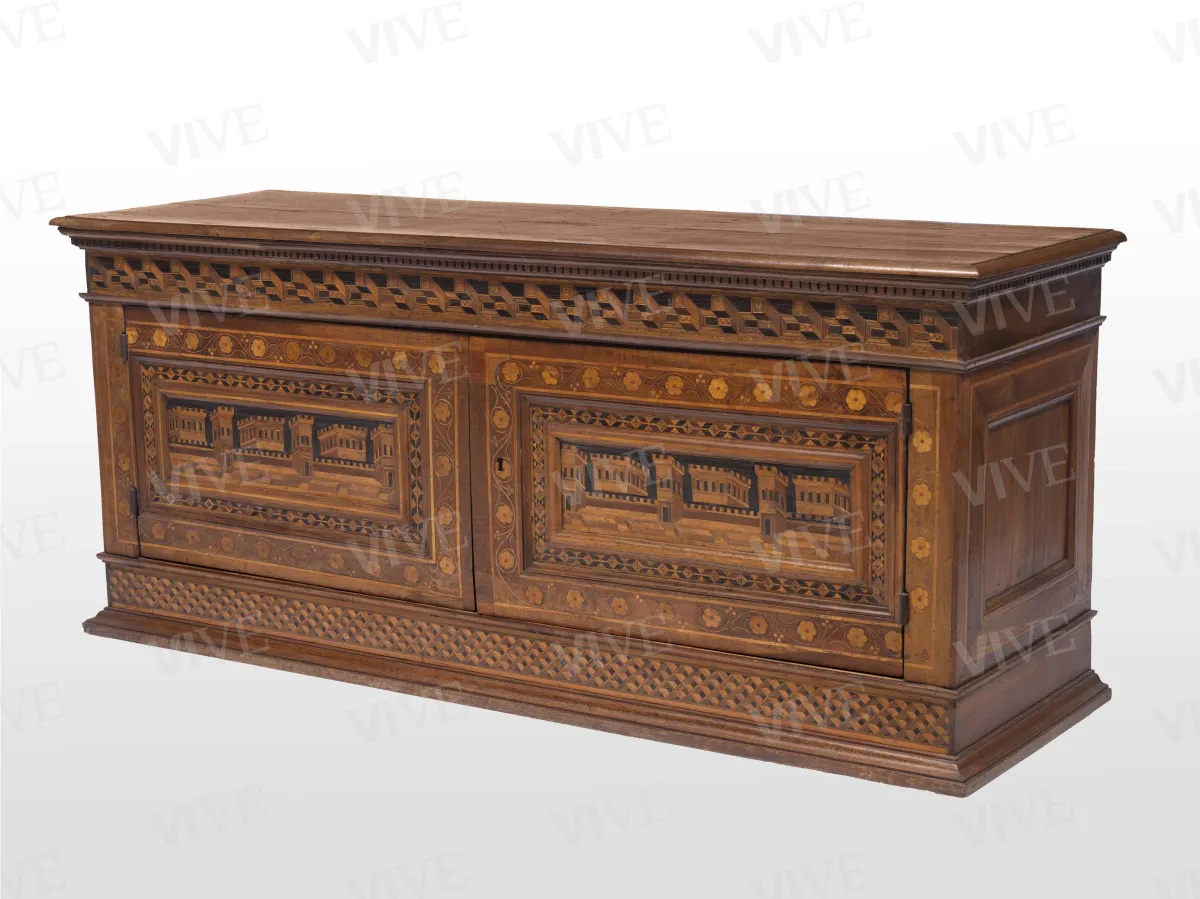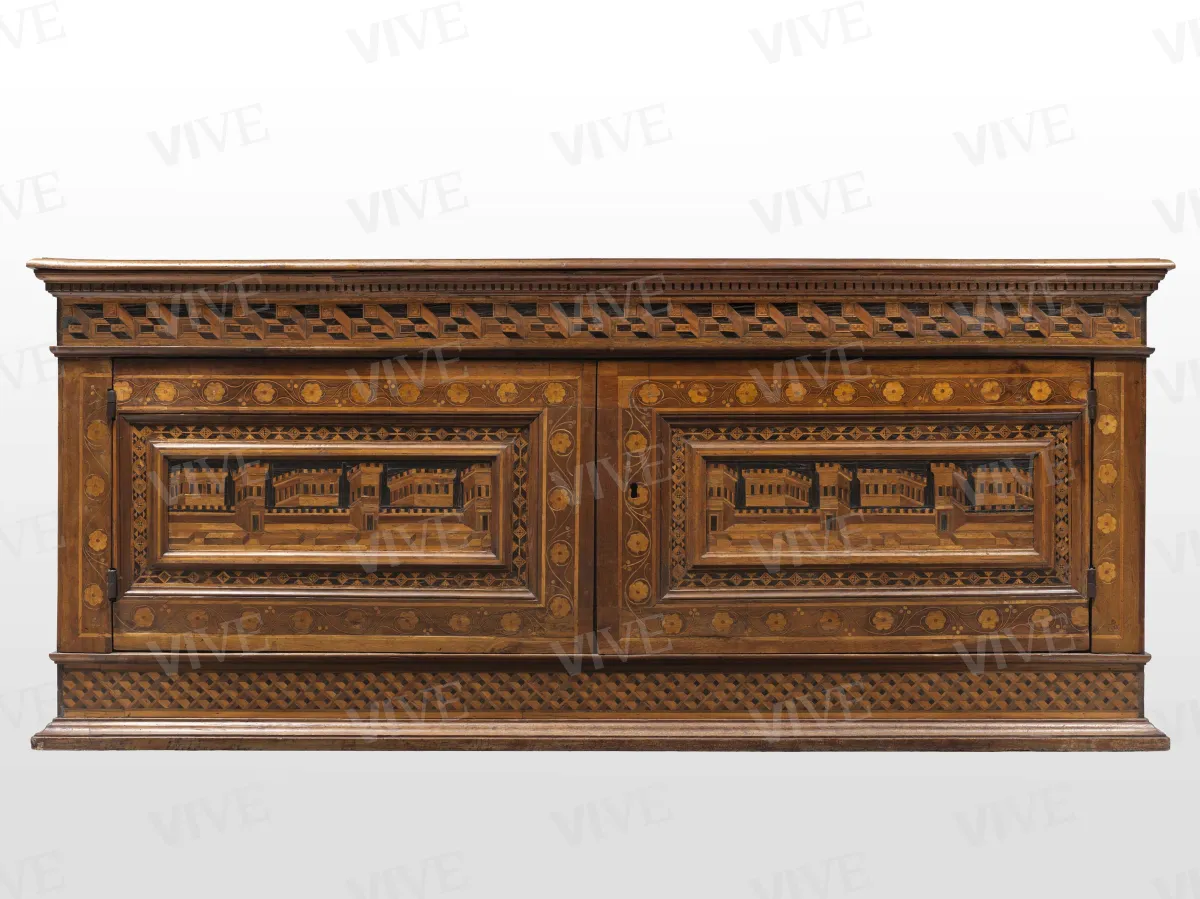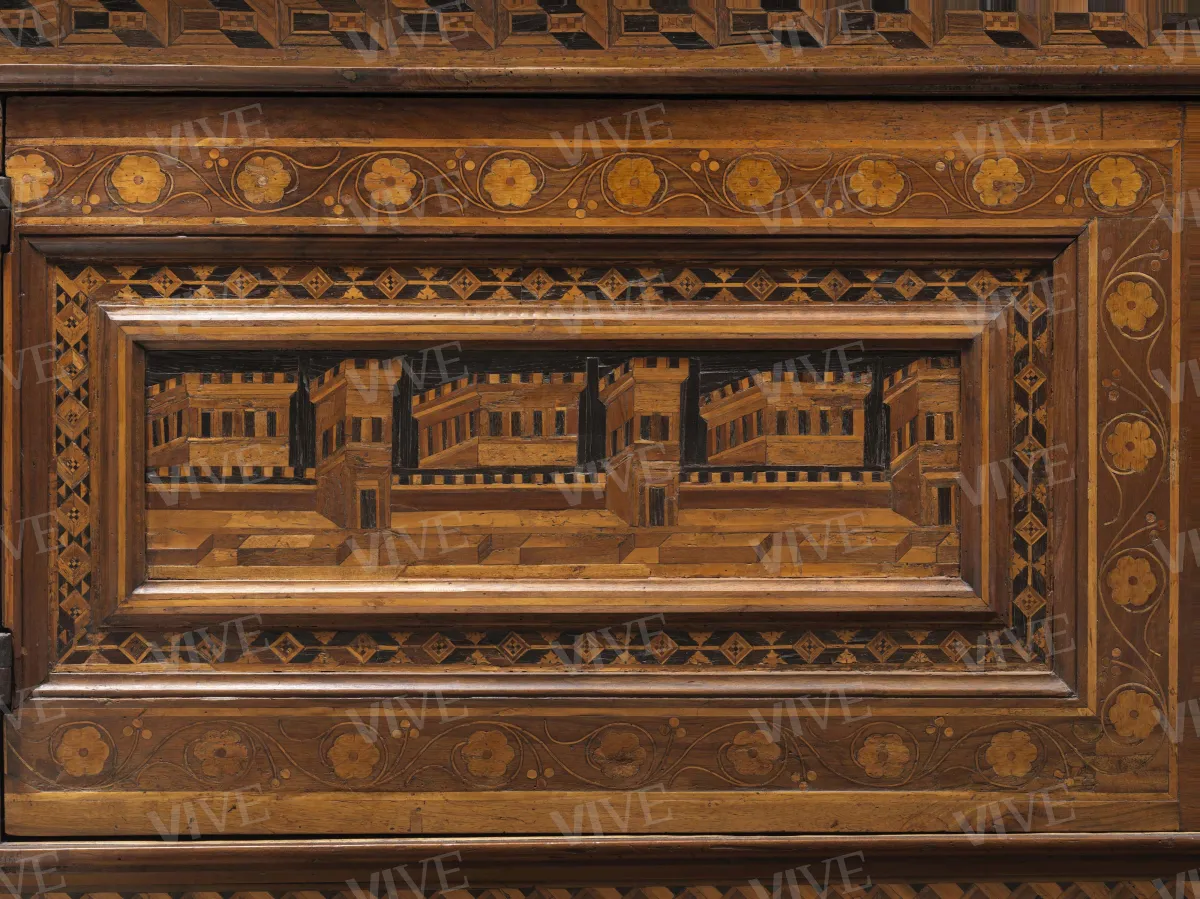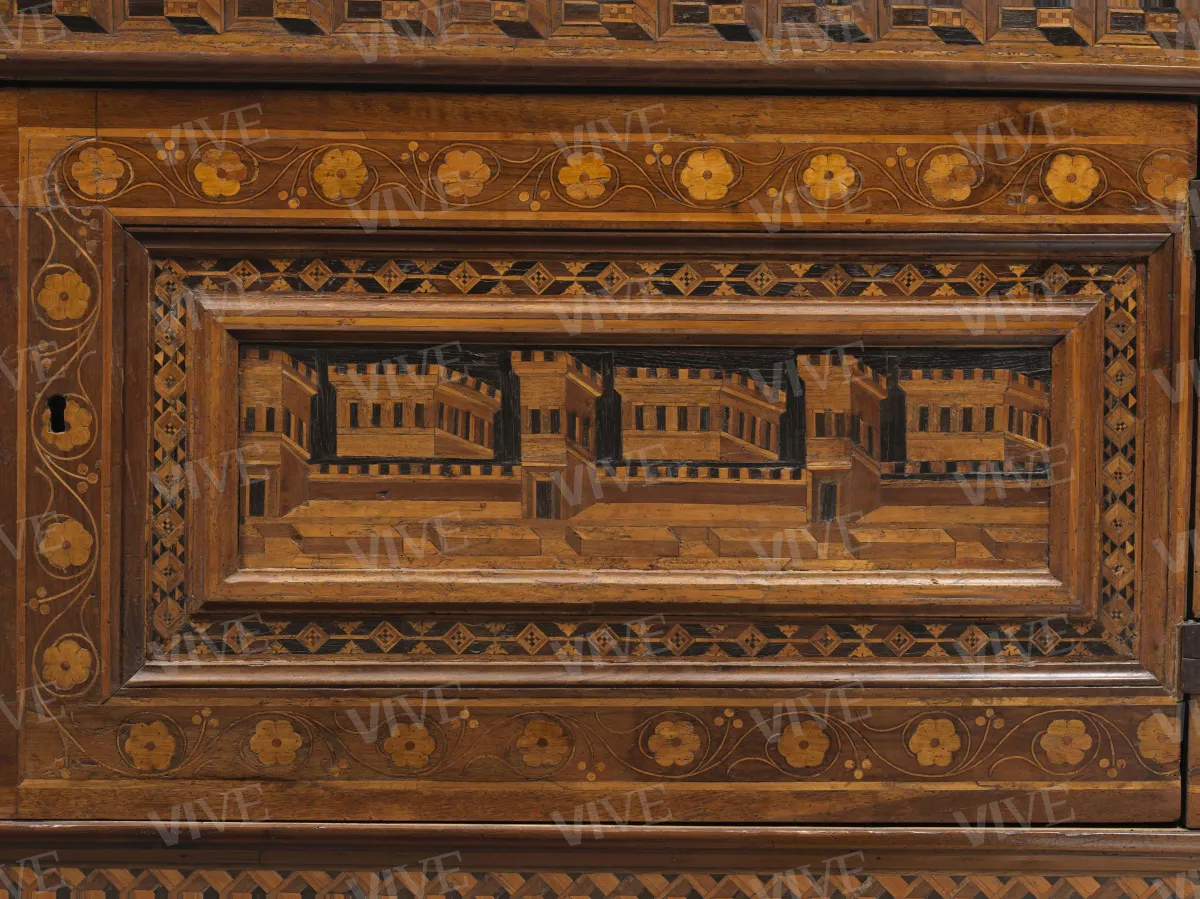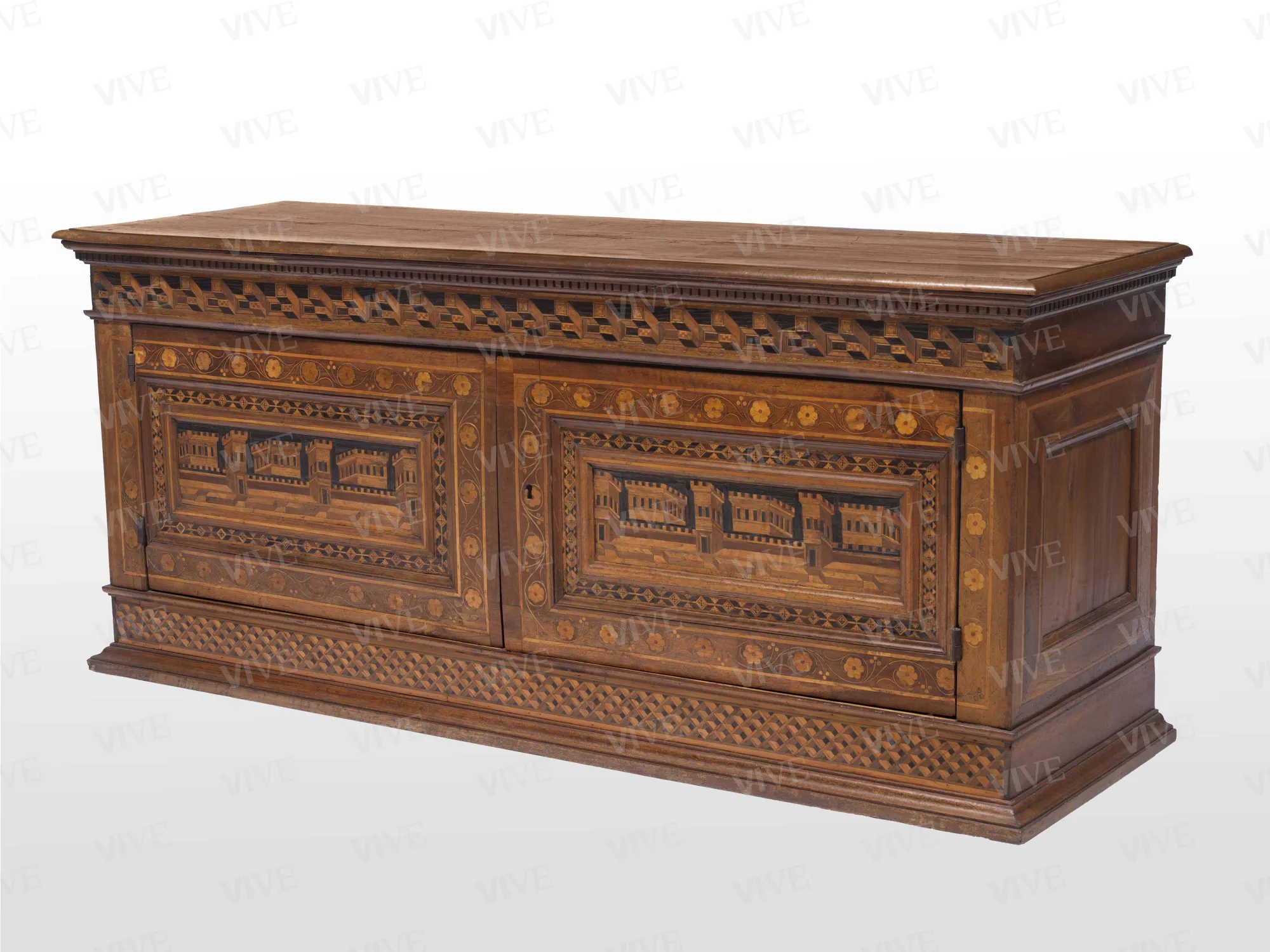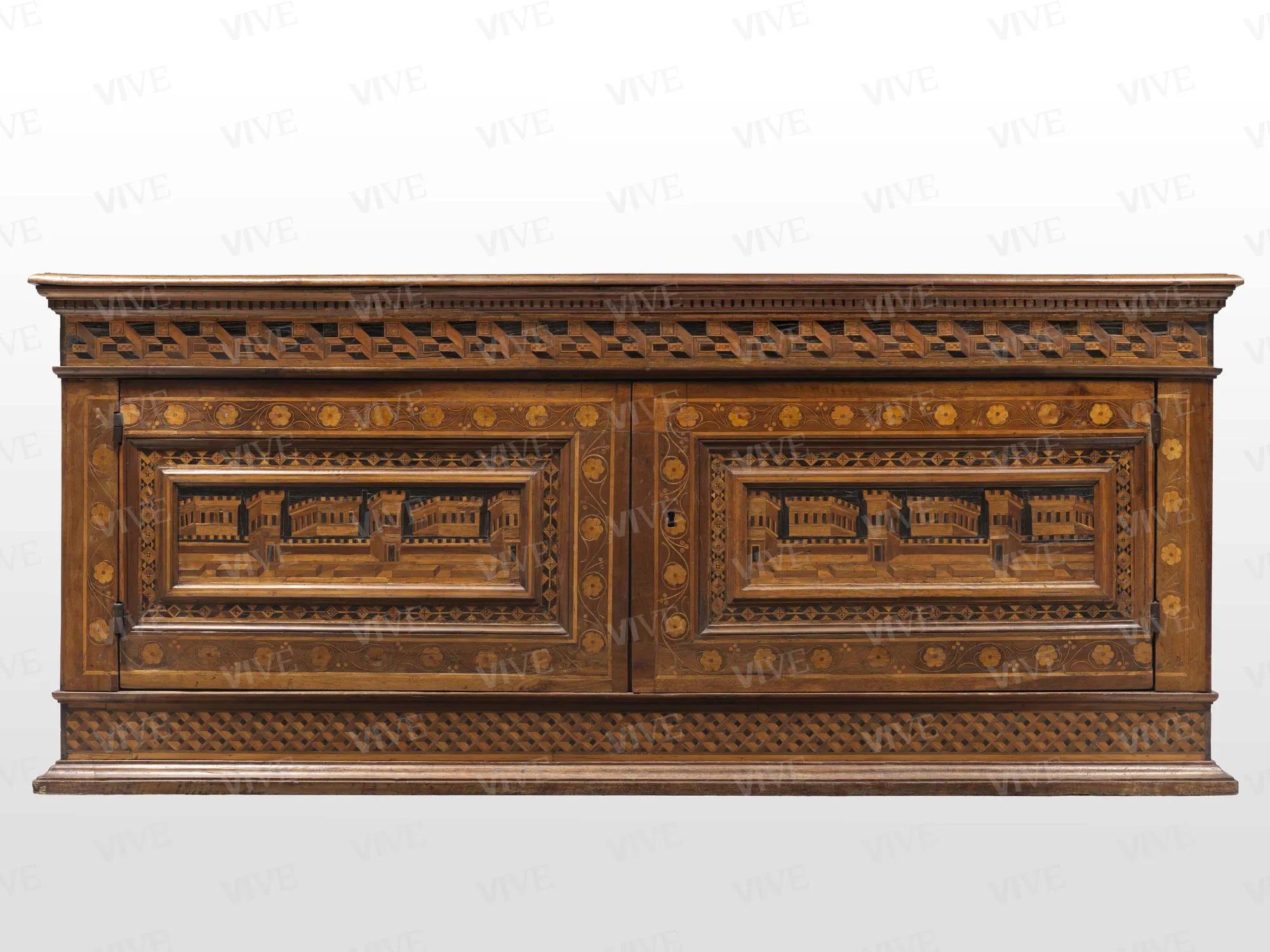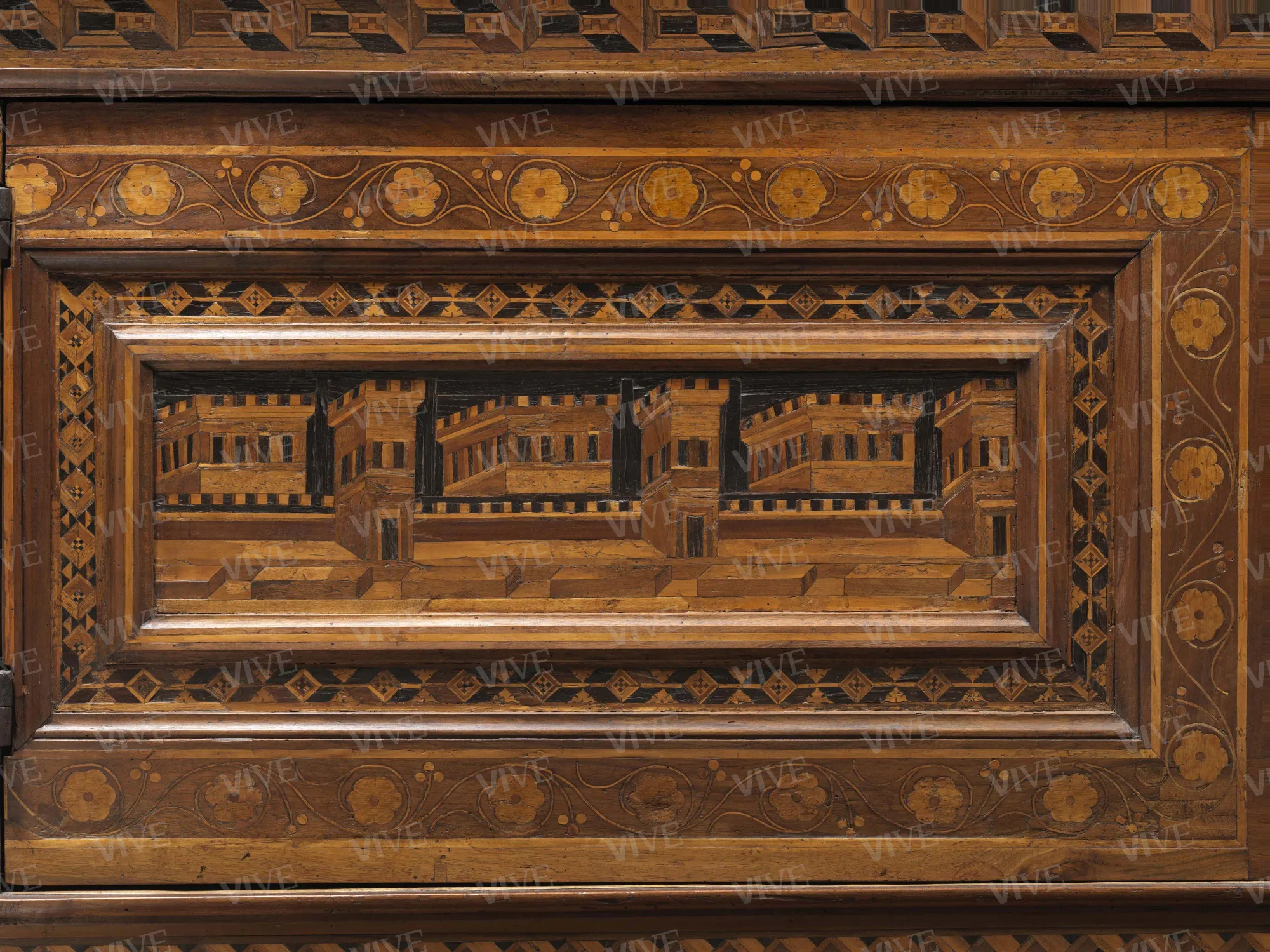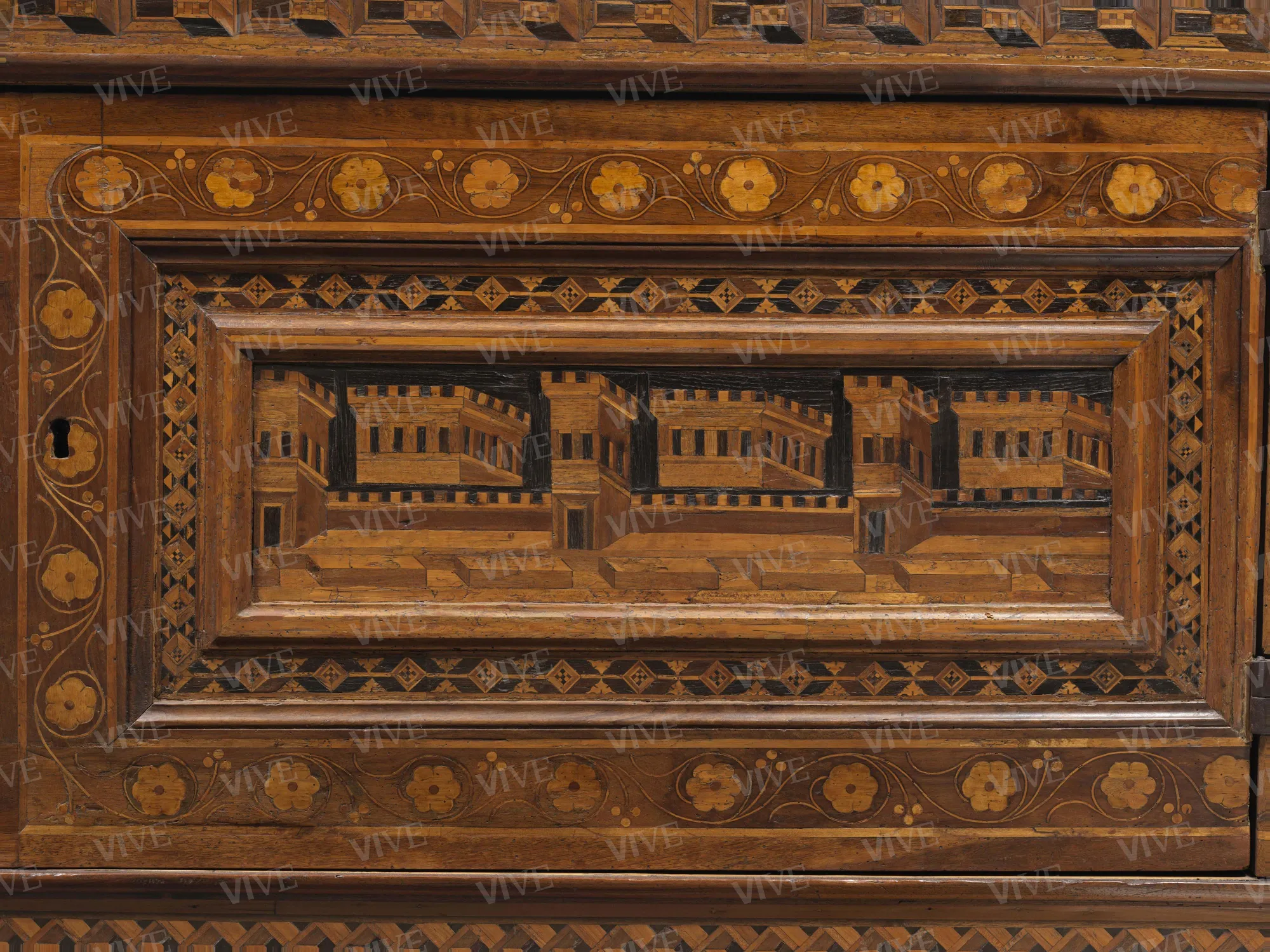Credenza
Northern Italy 1490-1499
This sizeable credenza serves as a sideboard designed to hold crockery. Its surface features inlaid decorations, primarily utilizing the “a toppo” technique, with a distinctive perspective motif depicting turreted, crenellated towns. This motif suggests that the piece originates from northern Italy, specifically within the Canozi da Lendinara school, where such designs were particularly common.
This sizeable credenza serves as a sideboard designed to hold crockery. Its surface features inlaid decorations, primarily utilizing the “a toppo” technique, with a distinctive perspective motif depicting turreted, crenellated towns. This motif suggests that the piece originates from northern Italy, specifically within the Canozi da Lendinara school, where such designs were particularly common.
Details of work
Catalog entry
The substantial dimensions of this furniture piece indicate its function as a credenza, a sideboard likely designed for storing crockery. The front is distinguished by two opening doors, providing access to the cabinets. The overall structure exhibits a pseudo-architectural design without supports, resting directly on the floor through a continuous molding. Above, a pedestal is adorned with inlaid fretwork lattice, created using the “a toppo” technique. This involves applying prefabricated tesserae with predominantly geometric themes, achieved by cutting sections from a composite bundle of various strips. The two doors, with the right one featuring a keyhole, contain central panels with simple intarsia depicting the outline of a turreted city, encircled by crenellated walls, viewed in double perspective against a dark background. This depiction is given a double frame: the inner frame comprises small lozenges filled with checkered patterns and the outer frame features a naturalistic motif of flowers and plant racemes, rendered using the “a buio” technique.
The cabinet is adorned with a genuine entablature, featuring a frieze and denticulated cornice. The frieze is embellished with illusionistically depicted corbels in lateral perspective, with small checkered patterns adorning the heads. However, the sides are devoid of decorations, displaying only a double intarsia fillet. The decorative motif of turreted crenellated cities, previously associated with the art of Piero della Francesca (see the OA report of the work compiled by Fernanda Iacoangeli, Rome, Archivio storico, Museo di Palazzo Venezia, which proposes a comparison with an unspecified cassone in the Berlin museums), should instead be attributed to northern Italian production. Specifically, this style is characteristic of the Po Valley region, which in the latter half of the fifteenth century was heavily influenced by the perspective elements devised by the Canozi da Lendinara masters.
A motif closely resembling that of the credenza doors in the Museo di Palazzo Venezia can be observed in the choir of Santa Maria delle Grazie in Milan. Specifically, this motif is evident in certain panels positioned above the backs of the lower order stools, which are believed to belong to the first choir of the Dominican church built in the early 1470s. These works bear similarities to carvings by Marco Cozzi in the Veneto and Friuli (Buganza 2009, pp. 251–257). Additionally, another instance of similar decoration, characterized by highly simplified architectural views, can be found on a bench assembled in the nineteenth century using various elements, currently housed in the Museo Bagatti Valsecchi in Milan (Chiarugi 2003, vol. I, pp. 162–164, cat. 233). A comparable example is also present on a cassone in the Museo delle Arti Decorative of the Castello Sforzesco in Milan (Colle 1996, pp. 124–126, cat. 145), for which parallels have been suggested with Emilian production and the work of Giovanni Maria Platina, a pupil of Cristoforo da Lendinara.
Lorenzo Mascheretti
State of conservation
Good.
Provenance
Florence, Giuseppe Salvadori, before 1919;
Rome, Museo Nazionale di Palazzo Venezia, purchased 1919 (OA report on the work compiled by Fernanda Iacoangeli, Rome, Archivio storico, Museo di Palazzo Venezia; but Hermanin 1948, p. 365, states that it is a gift from Professor Luigi Grassi, Florence).
References
Schottmüller Frida, Wohnungskultur und Möbel der Italienischen Renaissance, Stuttgart 1921, p. 44;
Hermanin Federico, Il Palazzo di Venezia, Roma 1948, pp. 365-368;
Steiner Carlo, Raffaella Del Puglia, Mobili ed ambienti italiani dal gotico al floreale, I, Milano 1963, fig. 57;
Ghelardini Armando, Il mobile italiano dal Medioevo all'Ottocento, Milano 1970, fig. 51;
Casanova Maria Letizia, Il Museo del Palazzo di Venezia, Roma 1994, p. 12;
Colle Enrico, Museo d’Arti Applicate. Mobili e intagli lignei, Milano 1996, pp. 124-126, cat. 145;
Chiarugi Simone, Arredi lignei, in Pavoni Riccardo (a cura di), Museo Bagatti Valsecchi, Milano 2003, vol. I, pp. 162-164, cat. 233;
Buganza Stefania, L’intricata storia del coro ligneo di Santa Maria delle Grazie a Milano, in Elsig Frédéric, Etienne Noemie, Extermann Grégoire (a cura di), Il più dolce che sia. Mélanges en l’honneur de Mauro Natale, Cinisello Balsamo 2009, pp. 251-257.

